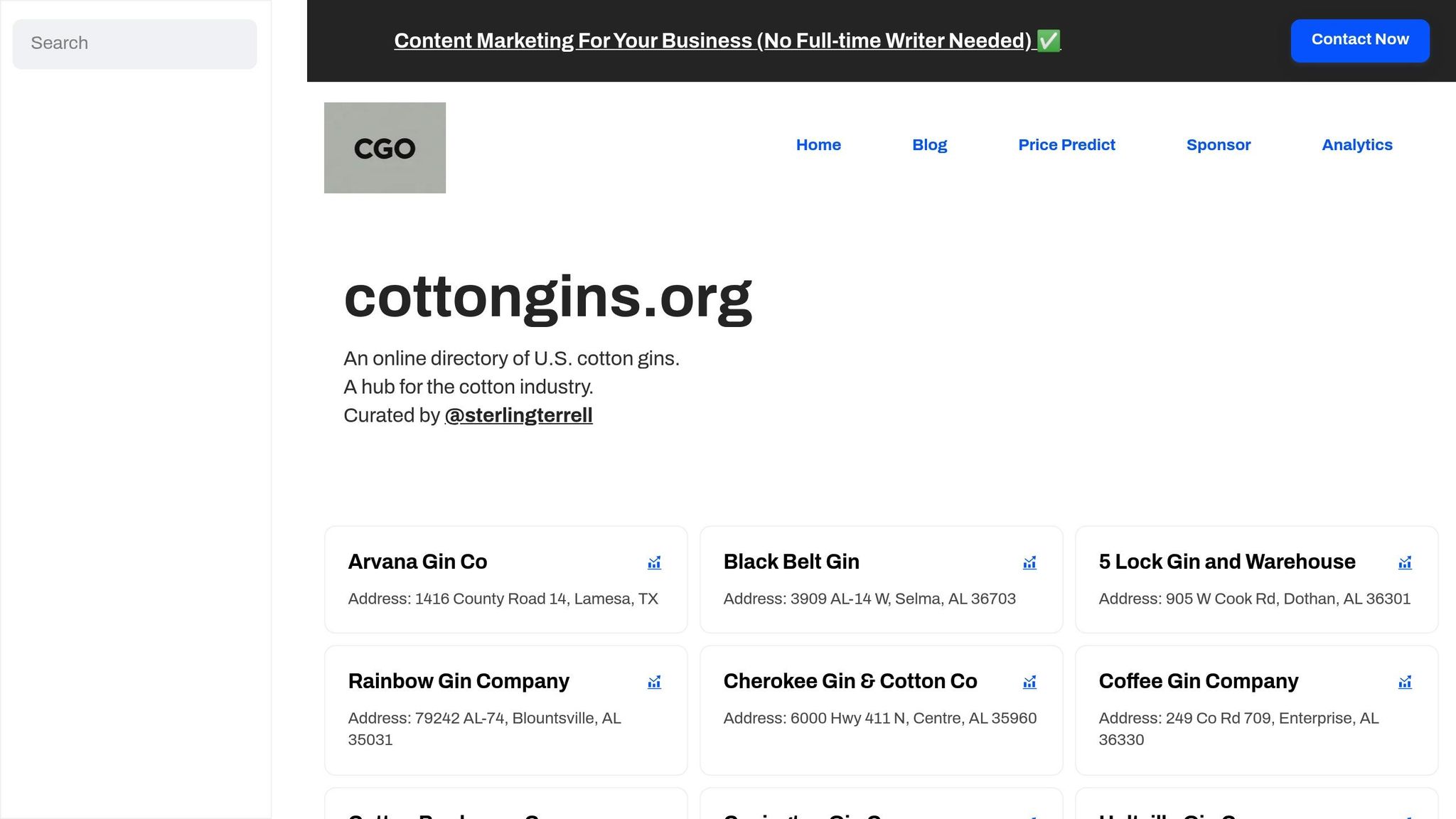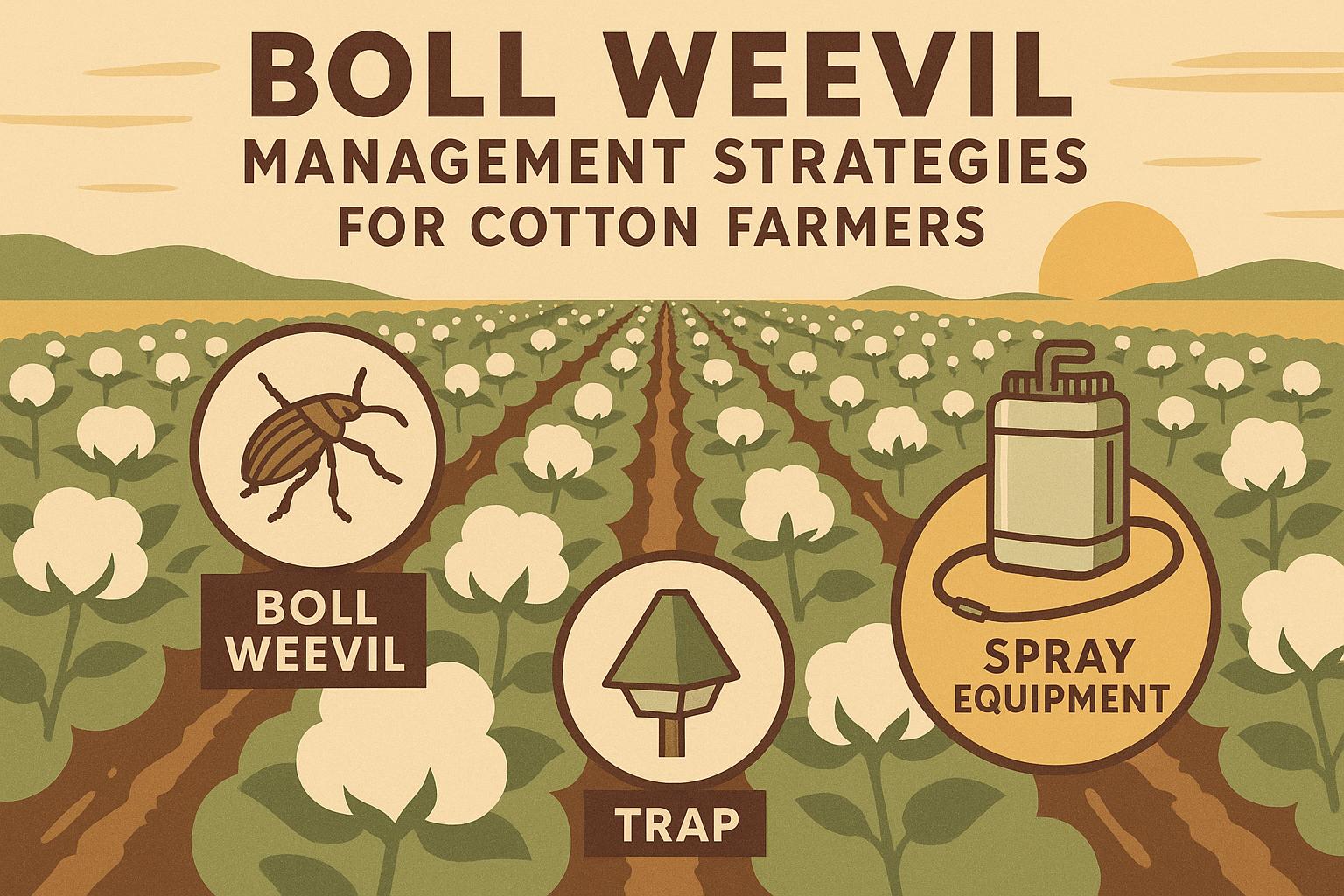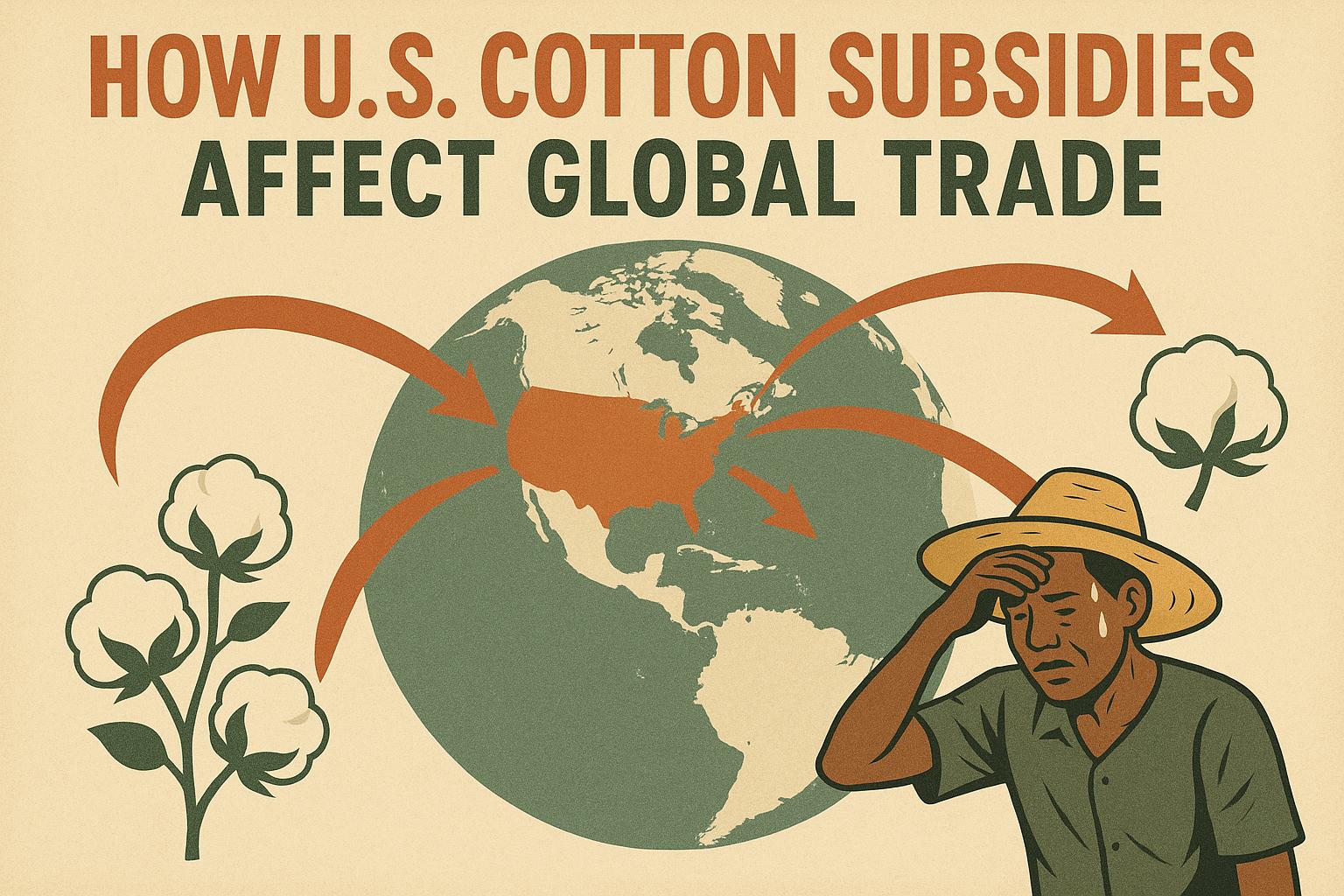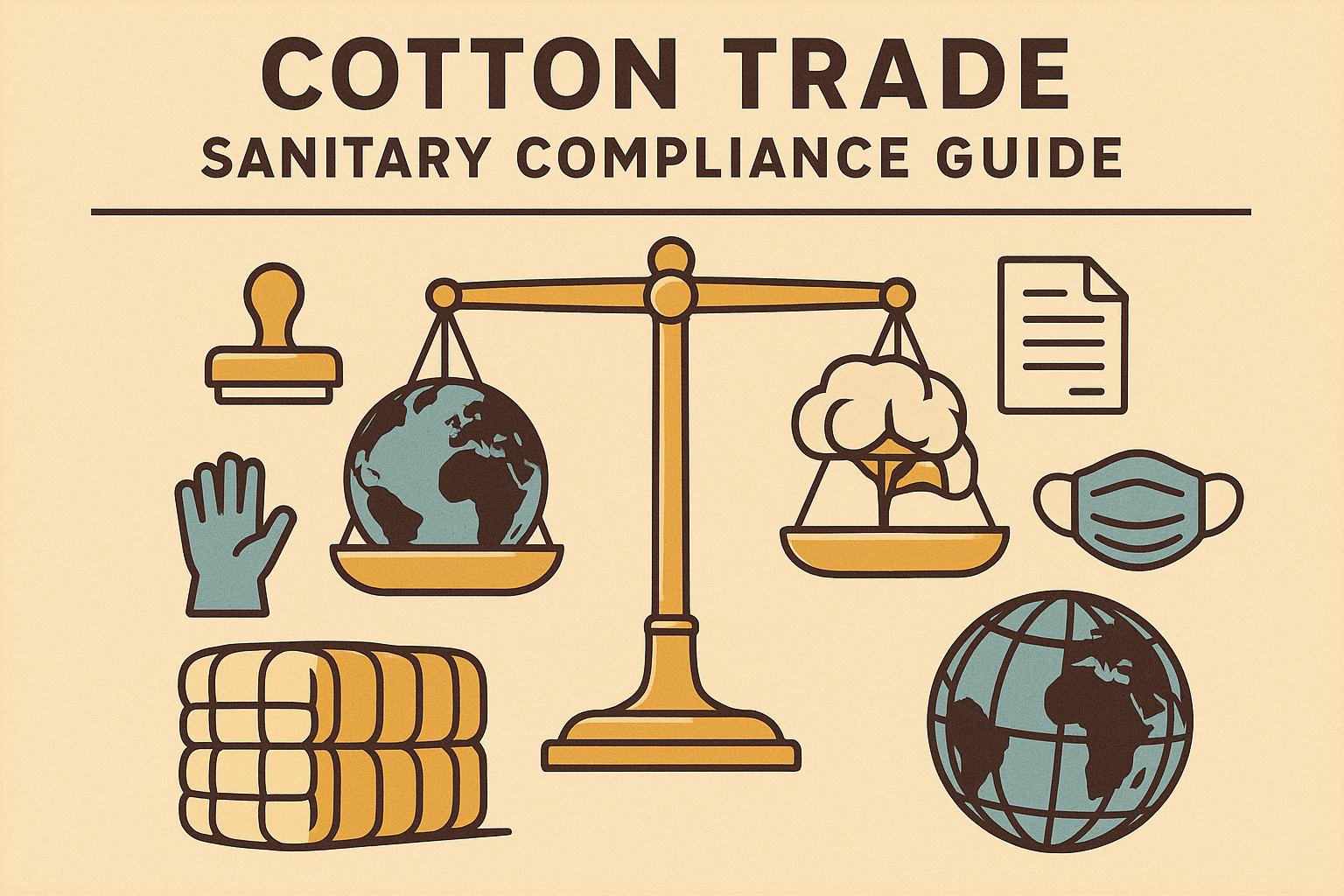Cotton ginning communities are facing tough economic challenges that threaten their stability. Key issues include rising costs, global competition, and unpredictable weather patterns. These problems affect not just the ginning operations but also local jobs, businesses, and public services, creating a ripple effect throughout rural areas. Here's a quick summary of the main challenges and potential solutions:
Key Challenges:
- Rising Costs: Energy, labor, and machinery maintenance are becoming more expensive, squeezing profit margins.
- Global Competition: U.S. cotton faces pressure from countries like Brazil and Australia, as well as the growing popularity of synthetic fibers.
- Climate Impacts: Erratic weather affects cotton quality, harvest schedules, and infrastructure, increasing recovery costs.
- Population Shifts: Younger residents leave for urban areas, reducing local workforce and tax revenue.
Solutions:
- Modern Technology: Automation, predictive maintenance, and energy-efficient equipment can cut costs and improve efficiency.
- Revenue Diversification: Using cotton by-products (e.g., animal feed, compost) and sustainable practices can create new income streams.
- Industry Networks: Platforms like cottongins.org help businesses connect, find resources, and explore sponsorship opportunities.
These communities must focus on modernization, diversification, and collaboration to rebuild their economic foundation and ensure long-term resilience.
Is The Cotton Gin Still Used Today? - Learn About Economics
Main Economic Problems in Cotton Ginning Communities
Communities centered around cotton ginning are grappling with tough economic hurdles, largely due to escalating costs and fierce global competition. These challenges are putting immense pressure on their ability to stay financially stable.
Rising Costs and Global Competition
Cotton gins are struggling with increasing energy and labor expenses, which eat into their already tight profit margins. On top of this, U.S. cotton is up against stiff competition from major players like Brazil and Australia. To make matters worse, the growing popularity of synthetic and alternative fibers in the textile industry is driving cotton prices down even further, intensifying the financial strain on these operations.
How Economic Problems Affect Local Communities
Economic struggles in the cotton ginning industry create a domino effect that impacts jobs, population trends, and public services. These challenges don’t just affect the businesses themselves - they reshape the social and economic landscape of rural communities throughout the Cotton Belt.
Job Losses and Business Struggles
When cotton gins face financial strain, the first hit often lands on local employment. These facilities, which depend on a relatively small but essential workforce - ranging from machine operators to office staff - may have to cut jobs as profits shrink. The ripple effect spreads quickly. Local banks and service providers experience reduced activity. Small-town businesses like diners, grocery stores, and gas stations see fewer customers as disposable income dwindles. Falling property values and a lack of reinvestment leave many business owners grappling with high fixed costs. This cascade of challenges often sets the stage for shifts in population.
Population Changes and Urban Migration
Economic instability can drive significant changes in a community’s demographics. Younger residents, in search of stable and varied job opportunities, frequently move to urban areas, leaving behind an older population and fewer workers to support local businesses. This outflow of talent can also lead to declining school enrollments in rural districts, making it harder to sustain educational programs. For businesses that remain, finding skilled employees becomes a growing challenge, further complicating efforts to modernize or expand. These demographic shifts place additional strain on public services.
Strain on Public Services and Infrastructure
Economic downturns in these communities often translate into reduced public revenue. With lower property and sales tax collections, local governments are forced to tighten budgets, even as the need for support grows. Infrastructure maintenance - critical for agricultural areas reliant on smooth transportation of cotton and equipment - often gets delayed. Public services like libraries, health clinics, and emergency response teams may face staffing cuts or reduced hours. The digital divide can widen as resources for modernizing technology dwindle, leaving communities less equipped to compete in today’s markets. In some cases, hospitals and medical services consolidate or close, forcing residents to travel farther for essential care. These challenges compound the pressures on already struggling rural areas, deepening the cycle of economic and social hardship.
sbb-itb-0e617ca
Solutions and Strategies for Economic Recovery
Cotton ginning communities face significant challenges, but there are practical ways to move forward. A mix of embracing modern technology and exploring new revenue opportunities can help these communities strengthen their economic foundation and prepare for future growth.
Embracing Advanced Technology
The cotton ginning industry is evolving, with new technologies paving the way for increased efficiency and reduced costs. Recent reports highlight notable market growth, emphasizing the importance of adopting cutting-edge tools.
- Automation and IoT Systems: Robotics and smart systems equipped with IoT capabilities improve efficiency by automating labor-intensive tasks and tracking performance in real time. This proactive monitoring helps prevent expensive equipment failures.
- Predictive Maintenance: Using data analytics, predictive maintenance schedules repairs during downtime, extending the life of machinery and avoiding unexpected breakdowns.
- Energy-Efficient Equipment: Upgrading to energy-saving machines not only cuts operational costs but also aligns with industry trends showing strong market growth.
While technology is key to improving operations, creating additional revenue streams through diversification is equally important for long-term resilience.
Diversifying Revenue and Adding Value
Relying solely on traditional cotton ginning leaves communities vulnerable to market fluctuations. Diversification offers a way to reduce these risks while opening doors to new economic opportunities.
- By-Product Utilization: Cotton gin trash and cottonseed can be transformed into valuable products like animal feed, biomass, compost, or oil. This not only minimizes waste but also generates extra income.
- Sustainable Practices for Premium Pricing: Traceability systems, such as those using DNA markers or blockchain, allow producers to certify sustainable practices, which can command higher prices in the market.
- Integrated Processing Solutions: Combining ginning, cleaning, and packing into a single streamlined process boosts productivity and lowers transportation expenses.
Additionally, tapping into comprehensive industry directories can provide resources and connections to support these recovery strategies. Together, these approaches can help cotton ginning communities adapt and thrive in a changing economic landscape.
Using Industry Directories for Growth
Building strong networks is essential for cotton ginning communities, especially when navigating economic challenges. Industry directories act as valuable tools that help businesses uncover opportunities, form partnerships, and enhance their visibility. By serving as a central resource for industry information, these directories create pathways for measurable growth.
Why Comprehensive Directories Matter
A well-rounded directory brings the entire industry under one roof, enabling cotton ginning businesses to connect with potential partners, suppliers, and customers from various regions. Instead of relying solely on word-of-mouth or local connections, these platforms offer access to a much broader network. This expanded reach allows small and medium-sized operators to collaborate on projects that can lead to long-term success.
Directories also help businesses identify market gaps and explore areas for specialization. Service providers and equipment suppliers, in particular, benefit from direct access to a targeted audience of potential customers.
Spotlight on cottongins.org: Building Industry Connections

The platform cottongins.org is a prime example of how a directory can strengthen industry ties. It features detailed profiles, including location data for operations like Arvana Gin Co and Black Belt Gin. This level of specificity makes it easier for businesses to find and connect with nearby partners or suppliers.
The "Submit A Gin" feature on cottongins.org allows new cotton gin businesses to add their information to the directory, ensuring the listings stay updated and the network remains active. For communities looking to attract investors or highlight their agricultural capabilities, having their operations listed in a trusted directory can add credibility and improve accessibility.
Additionally, comprehensive directories like this one can open doors to targeted sponsorship opportunities. With rising costs and increasing global competition, these resources help businesses connect, invest, and adapt. On cottongins.org, sponsorship options provide another avenue for growth. The platform offers several sponsorship tiers, each with unique promotional advantages:
| Sponsorship Type | Monthly Cost | Key Benefits |
|---|---|---|
| Sponsored Post | $200 per post | Top placement for one day, social media sharing, permanent archive |
| Official Sponsor | $200 per month | Footer logo placement, backlink, free sponsored post with an annual commitment |
| Featured Sponsor | $400 per month | Premium site placement, footer logo, two free sponsored posts with an annual commitment |
These sponsorship packages not only boost visibility but also support a resource that benefits the entire cotton ginning community. The platform further enhances its value by offering a subscription service for blog posts and industry updates. This ensures members stay informed about market trends, regulatory shifts, and new technologies. By tapping into these resources, cotton ginning communities can strengthen their networks and create opportunities for revitalization and growth.
Conclusion: Building a Strong Future for Cotton Ginning Communities
Cotton ginning communities are navigating a tough landscape shaped by market fluctuations, rising costs, and climate challenges. Yet, these very hurdles are driving fresh ideas and collaboration throughout the industry.
One key to resilience lies in diversification. By tapping into by-products and alternative revenue streams, communities can reduce their reliance on traditional ginning operations. This approach not only stabilizes finances but also opens up new opportunities for growth.
Sustainability has shifted from being a choice to a necessity. With major retailers increasingly favoring sustainable cotton, ginning operations that adapt to handle certified sustainable materials will have a competitive edge. This involves investing in traceability technologies and working closely with growers who prioritize water-efficient and regenerative farming methods.
Modernized ginning systems also play a crucial role. Advanced equipment capable of processing sustainable cotton while maintaining quality can attract premium contracts, boosting profitability. However, technology alone isn’t enough - it works best when paired with strong industry connections.
Industry networks are vital for fostering collaboration and uncovering new opportunities. Platforms like cottongins.org illustrate the power of shared resources, offering directories and tools that help businesses form partnerships, explore sponsorships, and stay ahead of trends. These connections amplify the benefits of diversification and modernization, creating a stronger, more united industry.
FAQs
What are the best ways for cotton ginning communities to use modern technology to cut costs and improve efficiency?
Cotton ginning communities can cut costs and improve efficiency by switching to energy-efficient ginning equipment. These machines are designed to use less power and generate less waste, which means lower operational expenses and higher productivity.
On top of that, adopting AI-powered monitoring systems can transform how operations are managed. These systems allow for real-time decision-making, fine-tune processes, and can reduce waste by as much as 20%. With these tools, communities can process cotton faster, depend less on manual labor, and save money - all while moving toward a more sustainable future for the industry.
How can cotton ginning communities diversify their income and reduce reliance on traditional ginning operations?
To create more financial stability and reduce dependence on traditional ginning, cotton ginning communities can explore several practical strategies. One option is to focus on adding value to cotton by processing it further or producing refined goods. This can lead to higher profits and open up new market opportunities.
Another idea is setting up farm stores that sell locally made products. These stores not only provide an extra source of income but also strengthen ties within the community by encouraging local support.
Communities might also consider venturing into agritourism. Activities like farm tours or seasonal events can draw visitors, generating additional revenue while showcasing the region's agricultural heritage. Offering equipment financing or leasing services is another potential income stream, as is exploring untapped markets for cotton-based products. Together, these strategies can enhance economic resilience and reduce reliance on traditional ginning alone.
How can directories like cottongins.org help cotton ginning businesses tackle economic challenges and grow?
Directories such as cottongins.org are essential tools for cotton ginning businesses looking to tackle economic hurdles and broaden their reach. By offering an extensive list of cotton gin locations across the United States, these directories help boost visibility and connect businesses with potential clients, suppliers, and partners.
Beyond just listings, cottongins.org allows businesses to submit new entries and explore sponsorship opportunities. These options give gins a chance to solidify their presence in the industry, attract fresh customers, and build valuable partnerships. In a competitive market, these connections can be key to staying ahead and growing successfully.


